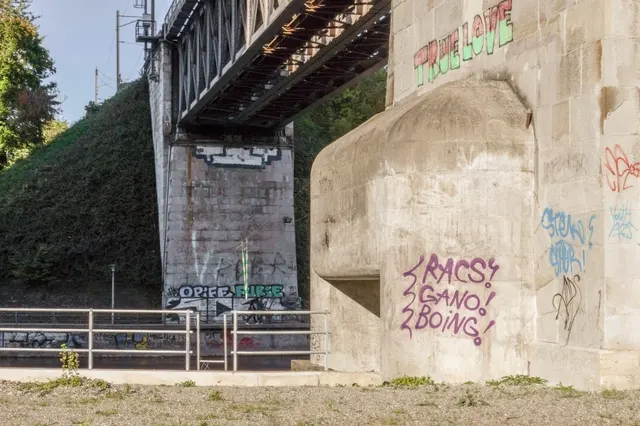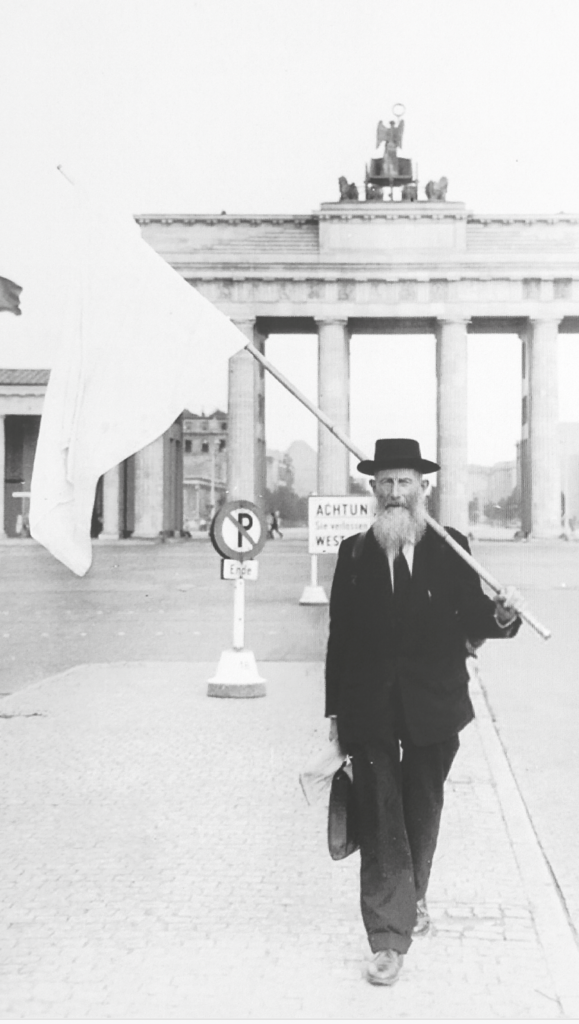UPCOMING
CURRENT
ARCHIVE

TOUR
“ZURICH – A CITY OF BUNKERS”: LECTURE WITH BRUNCH
Bunker-walk through the city center with architects Noël Fäh and Domenic Schmid
Zurich is the city of bunkers! This may come as a surprise, as the picturesque city on the lake is better known for its medieval old town or the Alpine panorama. And yet the bunker in Zurich has a fateful building tradition. As part of the exhibition WAR IS (NOT) OVER, we invite you to an event. Two architects will take us back to Zurich in 1939, after the outbreak of the Second World War. They will talk about bunkers and blockades, hidden relics of Zurich’s city history and the role of the now barely known “Limmatstellung” in Swiss national defence, showing how the military thinking of the time manifested itself spatially and in the civilian life of the city. Particular attention is paid to the hidden relics of the Limmat position, which are still scattered around the city and the countryside today. What role do these hidden witnesses of a war that never took place here play and how should they be dealt with today?
tichyocean
Lessingstr. 9,
8002 Zürich
Sunday, 23.02.25
11 am

EXHIBITION
WAR IS (NOT) OVER
Marina Abramović, Frédéric Bruly Bouabré, Sophie Calle, Max Daetwyler, Martin Dammann, Francisco de Goya, Thomas Galler, Andrew Gilbert, Shaun Gladwell, Andy Hope 1930, Doug Mills, Roman Ondák, Walid Raad, Jason Rhodes, Ivan Vucci, anonyme Fotografien and Archives of Modern Conflicts
tichyocean
Lessingstr. 9,
8002 Zürich
On August 21, 1968, as a twelve-year-old, I experienced the Warsaw Pact invasion of Czechoslovakia. I will never forget the Soviet tanks and the students demonstrating in Wenceslas Square. After the Cuban Missile Crisis, this was the inglorious climax of the Cold War.
After the collapse of the Soviet Empire, we all hoped for the long-awaited “end of history” — the end of the European wars. It was the time of pacifism. Nuclear missiles were scrapped and armies were dismantled. Nobody could imagine a threat scenario. The Swiss army also seemed useless. But then came the Yugoslav wars at the beginning of the 1990s. Over 200,000 people died in Serbia, Croatia, Bosnia, Slovenia and Kosovo. Mass graves were dug and their images shocked the world. The German “Never again” burst like a soap bubble in the sun. Since then it has happened in quick succession: Nine Eleven, Afghanistan, Iraq, Syria, Libya, Palestine. Internationalized terrorism brought war to the heart of Western civilizations. Many African wars occurred under the radar of the world press—too far away to affect us. But with the refugees streaming across the Sahara to us in Europe, the African wars are also reaching us.
But it was Russia’s attack on Ukraine that showed us our vulnerability. The war has arrived in Europe — WAR IS NOT OVER. The “Axis of Resistance”, Russia, Iran and China challenge the Western worldEconomic and military dominance, but also the Western values, are being called into question. This competition between systems has the potential to lead to a war of the worlds.
This exhibition shows works from the Tichyocean collection that deal with war. Thomas Galler deals with weapons and violence in the media. Shaun Gladwell was an “embedded” photographer and traveled to Afghanistan with Australian soldiers in 2009. Walid Raad researches the wars in his homeland— Lebanon. Martin Damann processed photos that Wehrmacht soldiers took in their free time on the Eastern Front. The Englishman Andrew Gilbert dealt with the colonial wars in Africa. Ivan Vucci photographed the assassination attempt on Donald Trump up close. Max Daettwyler represents the pacifist movements of the 20th century. These are some examples of the works on display. The exhibition is supplemented by anonymous photographs from the Vietnam War and the Soviet occupation of Prague in 1968 and books from the Archives of Modern Conflicts.
What can art do? Aren’t we all for peace? But what should we do? We will be silent for peace inspired by Marina Abramovic´ for seven minutes. Is that all artists can do? Silence? Yes, that’s all. Art is “ohn– mächtig”—powerless and powerful at the same time. We are on the edge of what is happening. We observe, describe, reflect. Like Francisco de Goya, we stand unarmed next to the mountain of corpses, with only a pencil or camera at hand. Los desastres de la guerra. Ecce Homo, ecce arte. Wars pass, but art remains. Can it change us? Giving up is not an option. It’s about the world as we love it. IMAGINE PEACE BUT BE READY FOR WAR!
Roman Buxbaum in September 2024
